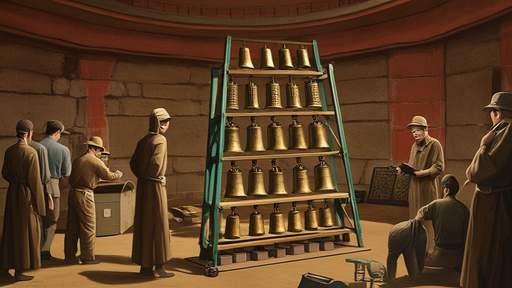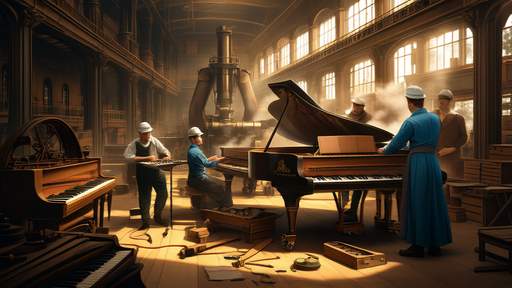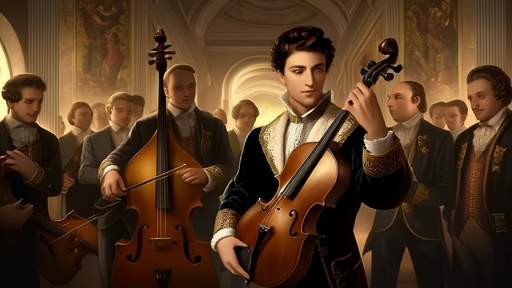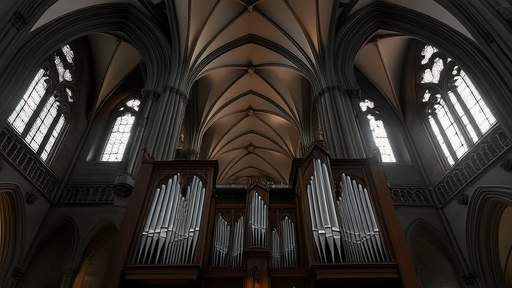The great halls of Constantinople's imperial palace echoed with sounds unlike anything heard in the ancient world - not the plucked strings of lyres or the breathy tones of flutes, but the mighty roar of hydraulic-powered pipe organs that could fill vast spaces with mechanical music. These technological marvels of the Byzantine Empire represented one of the most sophisticated musical instruments ever created in antiquity, blending engineering prowess with artistic ambition.
While most associate pipe organs with medieval cathedrals or Baroque concertos, their origins trace back much earlier to the hydraulic organs of Hellenistic Alexandria. What made the Byzantine organs unique was their scale, their political symbolism, and their role in imperial ceremony. The organs weren't merely musical instruments but mechanical ambassadors projecting imperial power through sound.
The Water Organ's Journey to Byzantium
The basic principles of the hydraulis (water organ) had been known since the 3rd century BCE when Ctesibius of Alexandria first described the instrument. Using water pressure to regulate air flow to the pipes created a more stable and powerful sound than human lungs could provide through bagpipes or other early wind instruments. The Romans adopted and spread the technology throughout their empire, with Nero famously playing the organ.
When Constantine established his new capital in the 4th century, he brought with him both Roman engineering traditions and a love for imperial spectacle. The organs of Constantinople became larger and more elaborate than their predecessors, with some accounts describing instruments requiring multiple operators to manage the complex system of pumps, levers, and pipes. The Byzantine innovation wasn't in inventing the organ but in perfecting it as a tool of statecraft.
Mechanical Marvels of the Imperial Court
Descriptions from Byzantine chroniclers paint a picture of astonishing technological achievements. The 9th century Book of Ceremonies details an organ with "golden pipes" installed in the Magnaura reception hall that played automatically when foreign ambassadors approached the throne. Another account tells of an organ powered by a hidden cistern that could produce sounds resembling thunder or bird calls at the emperor's command.
The most famous Byzantine organ was the one sent as a diplomatic gift to Pepin the Short, King of the Franks, in 757. Chroniclers described it as a "never-before-seen instrument" with brass pipes, leather bellows, and mechanisms that could produce various tones. This organ, likely built in Constantinople's imperial workshops, caused such astonishment in Western Europe that it helped spark the later development of church organs.
Music as Imperial Propaganda
In Constantinople's highly ritualized court ceremonies, organs served multiple purposes beyond musical entertainment. Their deep, resonant tones created an atmosphere of awe during imperial processions and religious services. The ability to produce sounds mimicking nature or battlefield noises demonstrated the emperor's command over both technology and the natural world.
Foreign visitors often received carefully staged organ performances as part of their diplomatic receptions. The message was clear: only the Byzantine Empire possessed the wealth, knowledge, and divine favor to create such mechanical wonders. When Liutprand of Cremona visited Constantinople in 949, he described golden organ consoles with roaring lions and singing birds - all mechanical automata accompanying the music.
The Technical Secrets Behind the Music
While no complete Byzantine organ survives, scholars have pieced together their likely mechanisms from descriptions, archaeological fragments, and later medieval organs that inherited their technology. The hydraulic system used water pressure to maintain constant air pressure in the wind chest, allowing for sustained notes impossible with mouth-blown instruments.
The pipes were probably made of bronze or brass for the bass registers and wood for higher pitches. Larger organs may have had multiple ranks of pipes that could be engaged separately to create different timbres. The most advanced models likely had primitive keyboards or lever systems to control which pipes sounded, though nothing as sophisticated as later medieval key actions.
What truly set Byzantine organs apart was their automation capabilities. Some accounts describe clockwork-like mechanisms that could play preset sequences, while others mention wind-powered organs that played continuously without human operators. These features would remain unmatched in Europe until the Renaissance.
The Organ's Decline in Byzantium
After the 9th century, references to great organs in Constantinople become less frequent. The reasons for this decline remain debated - some scholars point to changing musical tastes, others to the Iconoclast controversies that discouraged elaborate church instruments. The devastating sack of Constantinople in 1204 during the Fourth Crusade likely destroyed many remaining organs.
Yet the legacy of these instruments lived on. Byzantine organ builders fleeing the collapsing empire brought their knowledge to Italy and Western Europe. The hydraulic technology was adapted for church organs, while the imperial associations with the instrument made it a natural fit for Christian worship echoing heavenly harmony.
Rediscovering a Lost Sonic World
Modern reconstructions based on Byzantine descriptions reveal instruments capable of producing both delicate melodies and thunderous bass tones. Unlike the pure, piercing sound of later Gothic organs, Byzantine organs likely had a richer, more varied timbre - what one scholar called "the voice of the cosmos made audible."
Recent archaeological work in Istanbul has uncovered possible organ workshop sites near the old imperial palaces. Fragments of bronze pipes and pump mechanisms confirm the technological sophistication described in texts. Musicologists continue debating how Byzantine organs might have sounded, with some suggesting they played in modes and scales quite different from Western medieval music.
The Byzantine organ represents more than just a historical curiosity. It stands as a testament to an empire that saw music as both art and technology, where mechanical innovation served imperial ideology. In the echoing halls of Constantinople, these instruments gave voice to Byzantine civilization's grandeur - a mechanical choir singing praises to an empire that saw itself as the earthly reflection of divine order.
Today, as scholars and musicians work to reconstruct these lost instruments, we catch fleeting glimpses of that sonic world. The organs of Constantinople remind us that technology and art have always been intertwined, and that even in antiquity, humans sought to harness nature's forces to create beauty. The mighty hydraulic organs may be silent now, but their echo still resonates through history.

By /Jun 6, 2025

By /Jun 6, 2025

By /Jun 6, 2025

By /Jun 6, 2025

By /Jun 6, 2025

By /Jun 6, 2025

By /Jun 6, 2025

By /Jun 6, 2025

By /Jun 6, 2025

By /Jun 6, 2025

By /Jun 6, 2025

By /Jun 6, 2025

By /Jun 6, 2025

By /Jun 6, 2025

By /Jun 6, 2025

By /Jun 6, 2025

By /Jun 6, 2025

By /Jun 6, 2025

By /Jun 6, 2025

By /Jun 6, 2025